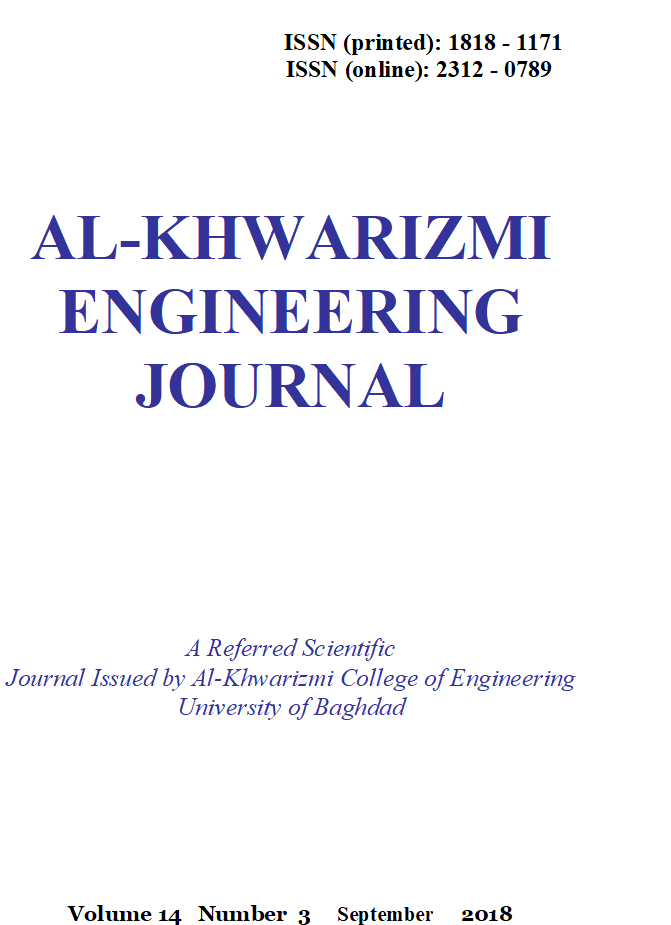Abstract
This paper deals with load-deflection behavior the jointed plain concrete pavement system using steel dowel bars as a mechanism to transmit load across the expansion joints. Experimentally, four models of the jointed plain concrete pavement system were made, each model consists of two slabs of plain concrete that connected together across expansion by two dowel bars and the concrete slab were supported by the subgrade soil. Two variables were dealt with, the first is diameter of dowel bar (12, 16 and 20 mm) and the second is type of the subgrade soil, two types of soil were used which classified according to the (AASHTO): Type I (A-6) and type II (A-7-6). Experimental results showed that increasing dowel bar diameter from 12 mm to 20 mm has a little effect on load-deflection behavior of the tested specimens with only 5% increase in failure load. This may be attributed to that the failure (caused by flexural crack) depends mainly on concrete strength. Results also showed that decreasing CBR value of subgrade soil from 7% to 5% decreases failure load by about 33%.
Copyright: Open Access authors retain the copyrights of their papers, and all open access articles are distributed under the terms of the Creative Commons Attribution License, which permits unrestricted use, distribution, and reproduction in any medium, provided that the original work is properly cited. The use of general descriptive names, trade names, trademarks, and so forth in this publication, even if not specifically identified, does not imply that these names are not protected by the relevant laws and regulations. While the advice and information in this journal are believed to be true and accurate on the date of its going to press, neither the authors, the editors, nor the publisher can accept any legal responsibility for any errors or omissions that may be made. The publisher makes no warranty, express or implied, with respect to the material contained herein.





